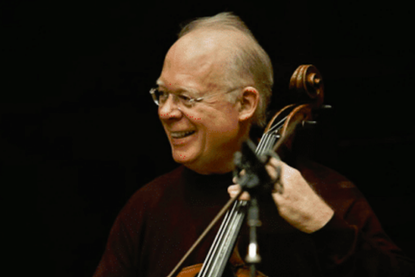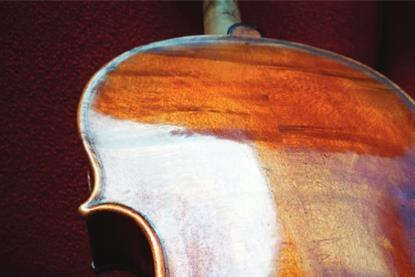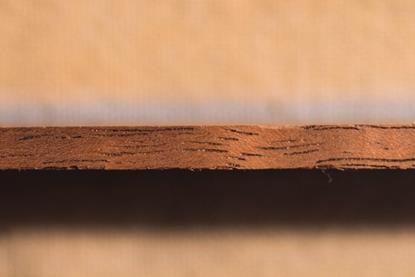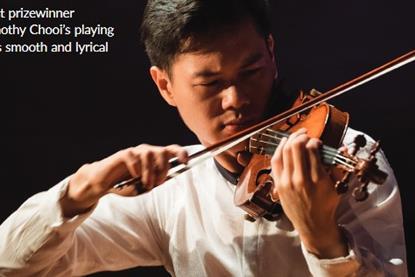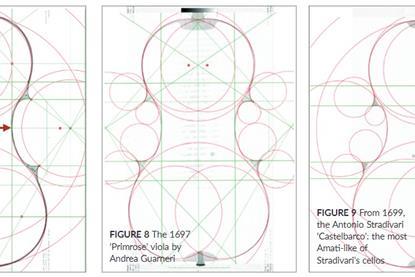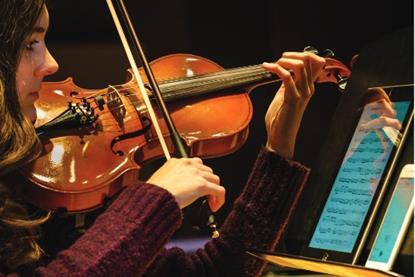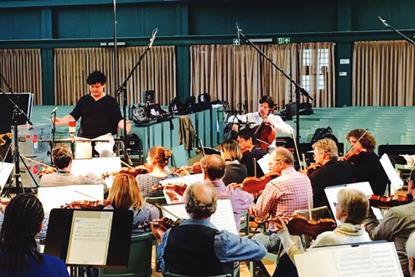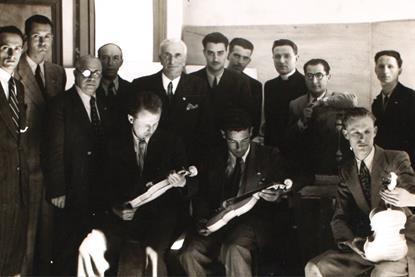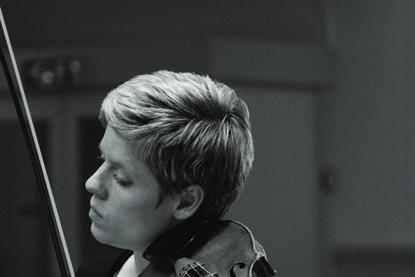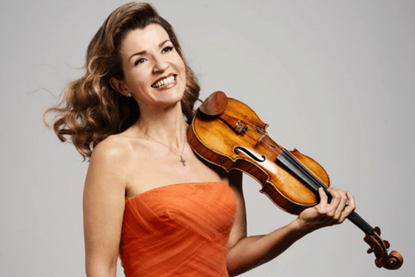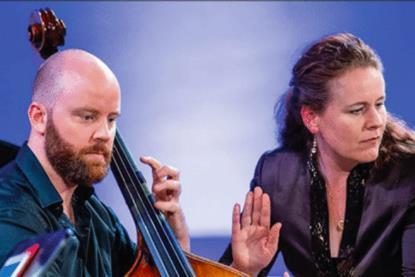- News
- For Subscribers
- Student Hub
- Playing Hub
- Directory
- Lutherie
- Magazine
- Magazine archive
- Whether you're a player, maker, teacher or enthusiast, you'll find ideas and inspiration from leading artists, teachers and luthiers in our archive which features every issue published since January 2010 - available exclusively to subscribers. View the archive.
- Jobs
- Shop
- Podcast
- Contact us
- Subscribe
- School Subscription
- Competitions
- Reviews
- Debate
- Artists
- Accessories
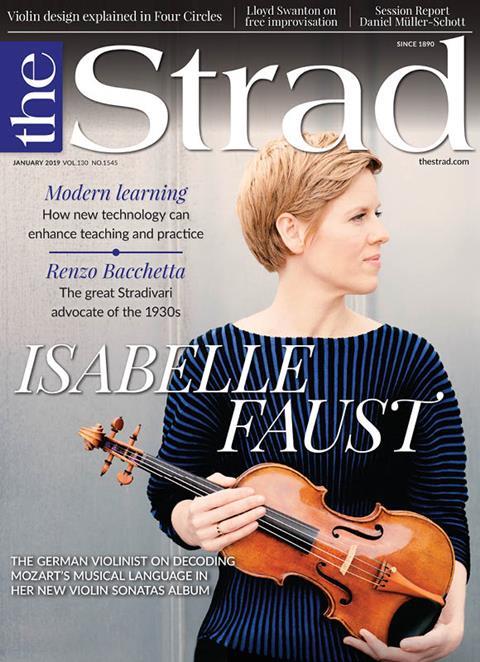
January 2019 issue
The Strad January 2019 issue is out now in which acclaimed German violinist Isabelle Faust, currently recording a set of Mozart sonatas, tells us about getting to grips with the composer's musical language.
We interview Daniel Müller-Schott about the inspiration behind his latest project, a disc of Russian music that takes him back to his earliest years as a cellist; and Australian double bassist Lloyd Swanton of jazz trio The Necks tells us about free improvisation and making his music accessible to new audiences.
We also take a look at the latest music teaching and learning technology, from apps to accessories; and feature full reports from the Joseph Joachim International Violin Competition in Hanover and the ARD Competition in Munich.
In our regular sections:
In Focus features a violin by Guarneri 'filius Andreae' that also bears the distinctive hand of 'del Gesù'; Gabriela Guadalajara details her method for bending a viola da gamba back in Trade Secrets; My Space looks at the workshop of the husband-and-wife lutherie team of Mira Gruszow and Gideon Baumblatt; and in Making Matters we hear from Steven Sirr and John Waddle on mass, density and CT scans in the second of a two-part focus on 'longitudinal arch structure'.
Our monthly Masterclass is from Lynn Harrell on Beethoven's Cello Sonata no.4; Tracy Silverman shows how to adapt guitar technique for jazz and pop violinists in Technique; Anne-Sophie Mutter tells us her Life Lessons; plus bassist Rick Stotijn on his affection for a little-known work by Joseph Marx in Sentimental Work.
We also bring you news of the latest competitions, products and auctions, and comprehensive reviews of concerts, CDs and books.
In the January 2019 issue
Masterclass: Lynn Harrell on Beethoven’s Cello Sonata no.4
Cellist Lynn Harrell considers challenges and contemporary concepts in the first movement of a sonata conceived entirely in the imagination of a deaf composer. From January 2019
In focus: A violin by Giuseppe Guarneri ‘filius Andreae’ c.1710
Gennady Filimonov explores Giuseppe Guarneri’s c.1710 violin
Beyond Bach: 12 tips for better Baroque playing
A thorough knowledge of Baroque repertoire apart from the works of Bach is so important if modern players are to gain a proper understanding of Classical and Romantic works, writes Adrian Butterfield
Technique: strum bowing
A guitar technique adapted for violin, to help bowed string players plug into their inner groove. By Tracy Silverman, electric violinist, author of The Strum Bowing Method, string faculty member at Belmont University in Nashville, Tennessee, and jazz clinic and workshop tutor worldwide
Trade secrets: bending the slope on a viola da gamba back
Care and accuracy are both essential for this delicate part of the making process. By Gabriela Guadalajara, luthier based in New York, NY, US
Postcard from Hanover: close, but no cigar
The tenth Joseph Joachim International Violin Competition boasted a celebratory atmosphere and some fine performances, but for Charlotte Gardner, the finals were a little underwhelming
Universal Harmony: the ‘Four Circles’ system of violin making
Luthiers over the past three centuries have used a vast number of patterns for their instruments – but the basic geometric principles remain constant across them all. Kevin Kelly explains his ‘Four Circles’ system for instrument design, adaptable to violins, violas and cellos
Lloyd Swanton on the art of free improvisation
As double bassist of long-running Australian trio the Necks, Lloyd Swanton is an expert in group improvisation. He speaks to Andy Hamilton about his inspirations, maintaining creativity, and making contemporary improvised music accessible
Smart learning: technology in the classroom
Advances in technology over the past few years have led to an explosion in apps and online platforms designed to aid instrumental teaching and practice. Peter Somerford looks at some of the most useful – but cautions that such tools should never be used to substitute rhythmic and aural skills
Daniel Müller-Schott: souvenir of Russia
Cellist Daniel Müller-Schott reveals how his album of Russian repertoire draws on the inspiration he felt as a participant in the 1992 International Tchaikovsky Competition for Young Musicians
Renzo Bacchetta, a legend in the making
Renzo Bacchetta’s wide-ranging influence on Cremona’s violin making culture and the promotion of Stradivari cannot be overstated, but as Luca Bastiani reveals, there is a darker side to the story, centring around Italy’s National Fascist Party
Isabelle Faust: clarity and insight
German violinist Isabelle Faust is known for the precision and intelligence of her performances. She talks to Amanda Holloway about how her new album of Mozart sonatas has brought her face to face with the enigma of the composer’s musical language
Postcard from Munich: the 2018 ARD International Music Competition
The viola and piano trio category winners of the Munich event demonstrated an exceptional level of maturity and insight, writes Chloe Cutts
Life Lessons: Anne-Sophie Mutter
The German violinist talks about the women who shaped her playing and the challenges for classical musicians posed by social media
Sentimental work: Rick Stotijn on Joseph Marx’s Adagio
The Adagio by the little-known Austrian composer Joseph Marx provides a unique inspiration for the Dutch double bassist – and an opportunity to perform alongside his sister Christianne






















